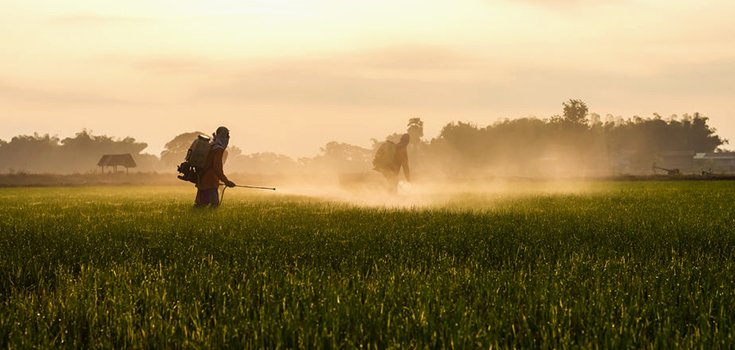Breaking: Sri Lanka Bans Monsanto’s Glyphosate Due to Skyrocketing Chronic Kidney Disease

Sri Lanka’s newly elected president, Maithripala Sirisena, has announced an import ban on a popular herbicide chemical known as glyphosate. It’s the same chemical used in Monsanto’s popular herbicide product, Roundup.
Not only has the Sri Lankan president banned glyphosate herbicide, but stocks of already-imported Roundup will be stopped. On the directive of President Mahinda Rajapaksa, all glyphosate sales in Sri Lanka are now illegal.
The ban comes in light of numerous studies linking the herbicide chemical to chronic kidney failure.
Sri Lanka has already banned the sale of glyphosate herbicides in March of 2014, but the decision was overturned in May 2014 after a review.
Glyphosate Blamed for Widespread Chronic Kidney Disease
Sirisena is a farmer and ex health minister, and blames glyphosate for rising rates of chronic kidney disease (CKD) throughout the Sri Lankan farming community.
CKD has already affected 15% of people working in the northern part of Sri Lanka which amounts to around 400,000 patients and a death count, directly related to Monsanto’s chemicals, of 20,000.
This may seem shocking, but these numbers simply relay a truth that another study previously stated: that kidney disease is five times higher in countries that are over-run with glyphosate chemicals. Though this is due in part to the fact that farmers in these countries often where very little in the way of protection when they are spraying Roundup on their rice fields, there is no excuse for such an abominable number of preventable deaths.
If you aren’t convinced of the reality of this problem, there are two short documentaries: “Mystery in the Fields” and “Cycle of Death,” both of which can shed light on this unfortunate phenomenon happening throughout the world.
Sri Lanka decided to ban glyphosate, not after the World Health Organization announced that the chemical was ‘probably carcinogenic,‘ but after seeing the results of two scientific studies led by Dr. Jayasumana. These detail how drinking water from abandoned wells, where concentrations of glyphosate and metals are higher, along with spraying farms with glyphosate, increased the risk of the deadly chronic kidney disease (CKDu) by up to 5-fold.
During a media briefing, the Sri Lankan president stated that several programs had been implemented to prevent the high occurrence of kidney disease among farmers in communities throughout the country.
There have been dramatic increases in kidney disease, including total kidney failure in the US, Sri Lanka, and other countries that farm genetically modified organisms resistant to glyphosate.

Why is there an ad for round up at the end of this article? Isn’t there a way to not support the companies and products that these articles are against. It isn’t entirely discrediting but is embarrassing and hypocritical to the cause. Who chooses the advertising and is it illegal to say no thank you to companies in direct conflict with the material you endorse. I guess I’m just baffled and don’t understand the rules like with most other things of this society.
Farmers in US have used Glyphosate since it’s release and since the early 90’s it’s more common use on crops. We now have 90% glyphosate tolerant corn, soy, cotton, canola, beets in the U.S. and no reports of kidney issues here. In fact there has been far fewer reports of herbicide injury since the introduction of GMO because glyphosate does not harm skin like many other herbicides do.